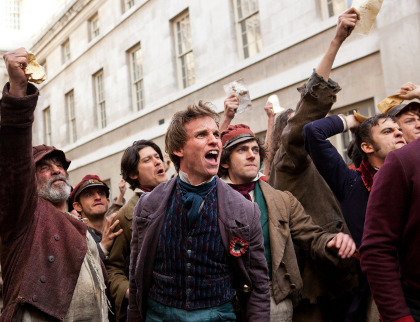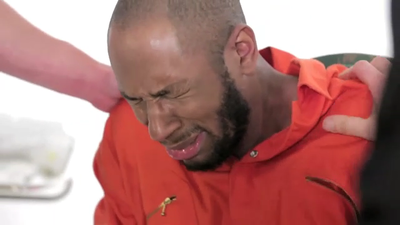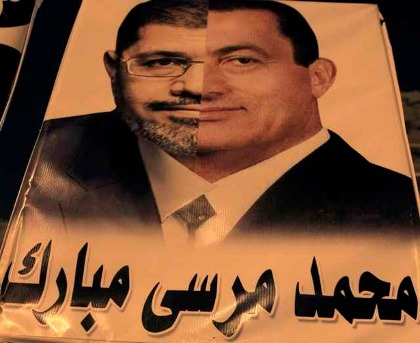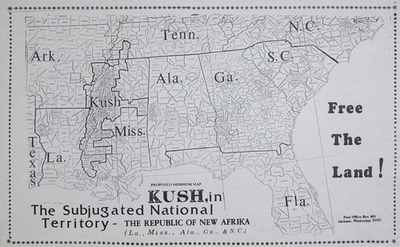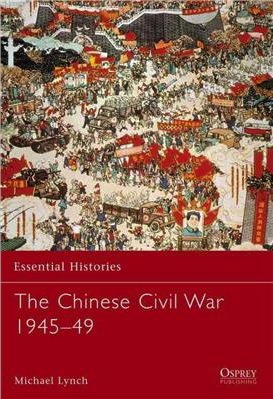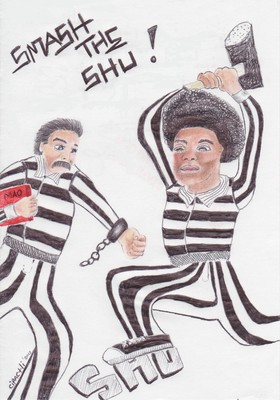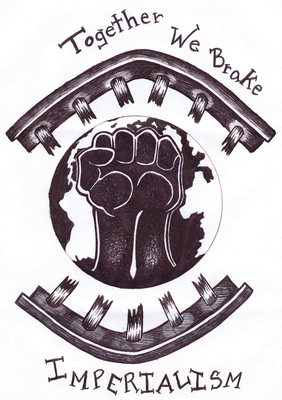In recent months the idea of developing a collective health campaign has
been tossed around within United Struggle from Within in California.
This was to build on and expand on the long-standing agreement to end
hostilities by developing more peaceful activities that would help
prisoners see each others’ commonality. It also came in response to the
proposed new Security Threat Group policies that greatly expand
repression in California prisons and serve to isolate and divide.
In a piece
supporting
this health campaign, Cipactli wrote in part,
“Exercise is another aspect that needs to be taken seriously by all
revolutionaries, exercise is so important that the state has targeted it
and labels it STG activity. They will validate you and send you to
solitary confinement for decades for doing push ups with a comrade. This
is how much they see exercise as a threat, because it strengthens us as
humyn beings and it is a weapon we use to combat the effects of prison
life. The state seeks to strip us of any forms of resistance, anything
we draw strength from hinders their project of instilling a sense of
helplessness in all prisoners so that we go along with their oppression
and never dare to resist the oppressor.
As revolutionary prisoners we need to develop methods of exercise to
keep our bodies in top shape. This helps us not only physically, but
science tells us that there is a connection between our physical health
and our mental health. Exercise prevents not only disease but also
depression, stress, anxiety and anger. Our world in these dungeons is
filled with all this negativity which harms us just like the bullets and
batons even though we often cannot see this damage in its physical form
but we react to it in negative ways, so exercise helps us keep this
stuff in check. These emotions will not go away but exercise helps us
better deal with them without them overpowering our lives.
A good exercise regime is from forty five minutes to an hour, this is
usually done from four to six days a week. I have found burpies and
calisthenics to be the most fulfilling. Our bodies need to sweat in
order to flush out the toxins and many times push ups just won’t do it.
California prisons no longer have weights so in the holes and SHUs
people mostly do burpies. This tradition, which many Cali prisoners are
not aware of, came from George Jackson and his comrades who developed
exercise regimes utilizing burpies and calisthenics. At the time, in the
60s and 70s, prisoners were not exercising in this way as these were
military style exercise regimes. Comrade George was a step ahead in
identifying the inter-connection between a strong body and mind. The
early 80s saw Chicano prisoners from Northern Cali develop this same
exercise regime, and the late 90s saw Chicano prisoners from Southern
Cali along with white prisoners soon follow this tradition that started
with Black prisoners. This is good that prisoners exercise, it is a
positive thing, but now the state is using it against us so we must find
ways to combat this.
One way to fight the STG labeling of exercise is for all prisoners to
work out together. If all prisoners work out at once it can no longer be
seen as STG activity. I believe this is a positive step forward for a
united front, however I don’t think the state will thus be prevented
from labeling group exercise STG activity, just as all prisoners of all
nationalities participate in hunger strikes yet it is still seen as STG
activity. But prisoners working out together would also be an
unprecedented step forward. Since most group exercise are done in the
hole and most holes consist of cages side-by-side, I can see a future
exercise regime consisting of each cage calling out an exercise,
regardless of what nation or sub-group one belongs to, and everyone
exercising together. In the SHU we can’t see no one, as everyone is in
an individual cell. Some people work out and some don’t so this is a
little more difficult. If you find yourself in a hole and people are in
individual cages, one is free to jump in and participate with those
exercising but the ideal is to have everyone participate. This is
something to work on and begin discussing, by working out together it
does not mean we are one car, it does not mean you’re joining another
nation or LO, it’s simply exercise. If we can starve together why not
sweat together?
Today’s prisons are no longer like the prisons of our grandfathers,
conditions have changed and we must find ways to change with these
times. If we are to ever regain things like trailer visits for lifers,
weights, parole dates for lifers, and all the rest, we must be more in
sync. If we want the ‘end to hostilities’ to really last than we need to
do more, we need to implement methods which reinforce such policies as
an ‘End to Hostilities’ and group exercise involving all nationalities
and subgroups reinforce this.”
Some righteous comrades in Calipatria State Prison took up the task of
developing exercise programs that included all prisoners. They ended up
receiving rules violations, as one comrade reported:
“The correctional sergeant who wrote up the rules violation report
doesn’t even bother to check to see if we’re all in fact ‘Southern’
Hispanics, she just makes a blanket accusation and the Disciplinary
Hearing Officer who heard the rules violation report takes the
sergeant’s report at face value and finds us all guilty. We are
appealing our write-ups, but this is what can happen if others follow
the tactical advice given in the USW Health Campaign letter.”
This is a fair warning, but this is true for anyone who tries to stand
up for prisoners’ rights from behind bars. Even doing so from the
outside results in repression in the form of censorship, and
occasionally worse. So we do not put forth these ideas lightly and this
is just one tactic. But it is in line with our strategic goal, which is
currently to develop peace between different groups within the prison
populations. Without pushing towards that goal, conditions for prisoners
will only continue to worsen.
The people oppressing others for exercising are state employees who are
supposed to be accountable to the law. Every issue of Under Lock
& Key contains just a few examples of the illegal and unjust
things that they are doing. The potential for abuse in prisons is
well-known and it is a struggle to hold the abusers accountable. Our
struggle right now is often just to get these people to follow their own
laws, which forbid torture and cruel and unusual punishment, and their
own mandates which claim to promote rehabilitation.
It is our job as an independent advocate for prisoners of the United
$tates to challenge the legitimacy and legality of new policies that
restrict the rights of prisoners. With the current trajectory in the
CDCR, it seems that anyone who isn’t sitting in their room by themselves
watching TV will soon be considered a security threat. This department
of “Corrections and Rehabilitation” is more and more becoming an
Orwellian nightmare. Despite what they may think, everything they say or
do is not state-sanctioned. Of course, we also know that much of what
they do that is state-sanctions still is not right in the eyes of the
oppressed masses and all who believe in justice.
This controversy regarding exercise is just one petty example of what we
are trying to prevent with the draft goals that MIM(Prisons) published
leading up to the demonstrations in July. The final point of that list
is:
“no punishment for affiliation with a gang, security threat group, or
other organization - in other words a complete end to the gang
validation system that punishes people (currently puts people in the SHU
for an indeterminate amount of time) based on their affiliation and/or
ideology without having broken any rules or laws”
The idea that exercising can be against the rules or laws is just plain
unacceptable. The same is true for any action that a prisoner takes to
improve the health of hself or others around h. We continue to promote
these tactics of the USW Health Campaign as part of the larger effort to
maintain the end to hostilities among groups of prisoners.
The end to hostilities is at the heart of this stage of our work. It is
what we have been promoting with the United Front for Peace in Prisons,
which was based in our assessment that the principal contradiction our
movement faces today is internal to the prisoner population itself. It
would be virtually impossible to progress without resolving that
contradiction. At the same time, breaking down these barriers requires
uniting around common concerns as prisoners in California have been
doing for the last couple years. The effort for peace and the effort for
humyn rights in prisons reinforce each other.
We’ve just received word from Pelican Bay affirming the plan to go
without food or work until the five core demands are met. Many within
Corcoran have asserted their plan to participate again. And San
Quentin’s Adjustment Center has organized their own list of demands and
will be participating in full this time around. Some populations facing
less harsh conditions are opting to just stop work until the demands are
met. Last time many prisons participated to varying degrees, and we
expect similar support this time around. But comrades should think
strategically about where they are based. You probably know by now
whether there is a base for indefinite striking where you are. Such a
path should not be taken lightly. The prisoners in Guantanamo Bay have
passed day 150 on their strike and they have not gotten anything from the state
but force-feeding and abuse in response. While the response to a hunger
strike in Guantanamo Bay is likely to be different from a response to a
strike in California, any hunger strike will have to last a long time
and gain a lot of public support to get the desired results.
Consider what results are possible where you are. Solidarity fasting for
shorter periods can serve as agitational work to build unity and
awareness. But we need to work on more long-term projects as well, like
the health programs suggested here that can build solidarity in action
at a basic level. It is not a crime to support each other in pursuing
healthy lifestyles in a very unhealthy environment. And there are many
other programs that can be developed around education, literacy and
study groups and whatever other needs the people have where you are. Now
is the time to do it, while spirits are rising and prisoners are looking
for a way to be involved.
As always, let us know what is going on where you are. We will send you
updates as we get information. So stay in touch and take care of each
other.
Below is the statement from the four main representatives of the
Short Corridor Collective as reported by the Prisoner Hunger Strike
Solidarity Coalition:
The principal prisoner representatives from the PBSP SHU Short Corridor
Collective Human Rights Movement does hereby present public notice that
our nonviolent peaceful protest of our subjection to decades of
indefinite state-sanctioned torture, via long term solitary confinement
will resume on July 8, 2013, consisting of a hunger strike/work stoppage
of indefinite duration until CDCR signs a legally binding agreement
meeting our demands, the heart of which mandates an end to long-term
solitary confinement (as well as additional major reforms). Our decision
does not come lightly. For the past (2) years we’ve patiently kept an
open dialogue with state officials, attempting to hold them to their
promise to implement meaningful reforms, responsive to our demands. For
the past seven months we have repeatedly pointed out CDCR’s failure to
honor their word – and we have explained in detail the ways in which
they’ve acted in bad faith and what they need to do to avoid the
resumption of our protest action.
On June 19, 2013, we participated in a mediation session ordered by the
Judge in our class action lawsuit, which unfortunately did not result in
CDCR officials agreeing to settle the case on acceptable terms. While
the mediation process will likely continue, it is clear to us that we
must be prepared to renew our political non-violent protest on July 8th
to stop torture in the SHUs and Ad-Segs of CDCR.
Thus we are presently out of alternative options for achieving the long
overdue reform to this system and, specifically, an end to
state-sanctioned torture, and now we have to put our lives on the line
via indefinite hunger strike to force CDCR to do what’s right.
We are certain that we will prevail…. the only questions being: How many
will die starvation-related deaths before state officials sign the
agreement?
The world is watching!
Onward in Struggle and Solidarity.

